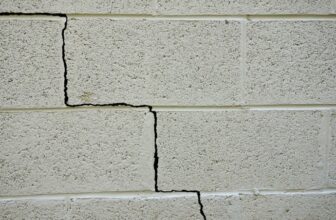
Mini piles are a popular and effective method used in foundation construction. They provide structural support and stability, making them ideal for various types of buildings and structures. In this comprehensive guide, we will delve into the world of mini piles, exploring their benefits, installation process, common FAQs, and much more. Whether you’re a homeowner, contractor, or construction enthusiast, this guide will equip you with the knowledge and insights to understand and appreciate the significance of mini piles in the field of construction.
Guides to Mini Piles
Mini piles serve as a fundamental component in many construction projects. Understanding their purpose and functionality is essential to ensure the success of your project. In this section, we will explore the intricacies of mini piles, providing you with valuable information.
What Are Mini Piles?
Mini piles, also known as micropiles or pin piles, are small-diameter piles that are drilled or driven into the ground to provide foundational support for structures. They are typically made of steel, concrete, or a combination of both, and they offer a reliable and cost-effective solution for various construction scenarios.
The Benefits of Mini Piles
Mini piles offer numerous advantages over traditional foundation systems. Let’s explore some of the key benefits:
- Enhanced Load Bearing Capacity: Mini piles are designed to bear heavy loads and transfer them to the underlying soil or rock strata effectively.
- Versatility: They can be used in a wide range of soil conditions, including areas with limited access or low headroom.
- Minimal Environmental Impact: Mini piles generate minimal noise and vibration during installation, making them an environmentally friendly choice.
- Cost-Effective: Mini piles often require less material and labor compared to other foundation systems, resulting in cost savings.
- Time Efficiency: The installation process of mini piles is typically faster than traditional piling methods, reducing project timelines.
- Structural Integrity: Mini piles provide excellent structural integrity, ensuring the stability and longevity of the building or structure.
Types of Mini Piles
Mini piles come in various types, each designed to suit specific soil conditions and project requirements. Let’s explore the different types of mini piles commonly used:
| Type of Mini Pile | Description |
|---|---|
| Driven Mini Piles | These piles are hammered into the ground using a pile driver. They are suitable for dense soil or rock formations. |
| Bored Mini Piles | Bored mini piles are created by drilling into the ground and then filling the borehole with grout and reinforcement. They are ideal for softer soil conditions. |
| Screw Mini Piles | Screw mini piles, also known as helical piles, are twisted into the ground using a rotating hydraulic torque motor. They are suitable for a variety of soil conditions and offer excellent load-bearing capacity. |
| Grouted Mini Piles | Grouted mini piles are constructed by injecting cement grout under pressure into the borehole. They provide enhanced stability and load-bearing capacity. |
Factors to Consider When Choosing Mini Piles
Selecting the right type of mini piles for your project is crucial to ensure its success. Here are some factors to consider when making your decision:
- Soil Conditions: Evaluate the soil type, including its composition, density, and stability, to determine the most suitable type of mini pile.
- Load Requirements: Consider the load-bearing capacity required for your structure and choose mini piles that can effectively support the anticipated loads.
- Site Access: Assess the site’s accessibility and any spatial limitations that may affect the installation process. This will help determine the most appropriate type of mini pile.
- Environmental Considerations: Take into account any environmental restrictions or regulations that may influence the choice of mini piles.
- Project Budget: Consider the cost implications associated with different types of mini piles and choose an option that aligns with your project budget.
Installation Process of Mini Piles
The installation of mini piles involves several crucial steps to ensure their effectiveness and stability. Let’s walk through the general installation process:
- Site Preparation: Clear the construction area, removing any obstacles or debris that may hinder the installation process.
- Drilling or Driving: Depending on the chosen type of mini pile, drill or drive the piles into the ground to the required depth.
- Reinforcement: Insert the necessary reinforcement materials, such as steel bars or helical blades, into the bored or driven piles.
- Grouting: If applicable, inject grout into the pile to enhance its load-bearing capacity and provide additional stability.
- Load Testing: Conduct load tests to ensure the mini piles can adequately support the anticipated loads.
- Structural Connection: Finally, connect the mini piles to the building’s foundation or superstructure using appropriate connectors or brackets.
FAQs (Frequently Asked Questions)
Q: How deep should mini piles be installed?
A: The depth of mini piles depends on various factors, such as soil conditions, load requirements, and the structural design. Generally, mini piles are installed to reach load-bearing strata or sufficient resistance to support the anticipated loads.
Q: Can mini piles be used in restricted access areas?
A: Yes, one of the significant advantages of mini piles is their ability to be used in areas with limited access or low headroom. The small diameter of mini piles allows for installation in confined spaces where larger equipment cannot reach.
Q: Are mini piles more expensive than traditional piles?
A: While the cost of mini piles may vary depending on the project requirements, they often prove to be a cost-effective solution. Mini piles generally require less material and labor, and their faster installation process can lead to overall cost savings.
Q: What is the lifespan of mini piles?
A: The lifespan of mini piles is generally extensive, often matching or exceeding the lifespan of the structure they support. When installed correctly and in suitable soil conditions, mini piles offer long-term stability and structural integrity.
Q: Can mini piles be used for both residential and commercial projects?
A: Absolutely! Mini piles are versatile and can be used for a wide range of projects, including residential, commercial, and industrial. Their adaptability and load-bearing capacity make them a reliable choice for various types of structures.
Q: Are mini piles environmentally friendly?
A: Yes, mini piles are considered environmentally friendly. Their installation process generates minimal noise and vibration, reducing the potential impact on the surrounding environment and nearby structures.
Conclusion
Mini piles play a crucial role in the world of construction, providing stability and support to various types of buildings and structures. In this comprehensive guide, we have explored the benefits of mini piles, the installation process, different types, and factors to consider when choosing mini piles. Armed with this knowledge, you can confidently approach your construction projects, knowing the importance and effectiveness of mini piles in building strong foundations.




